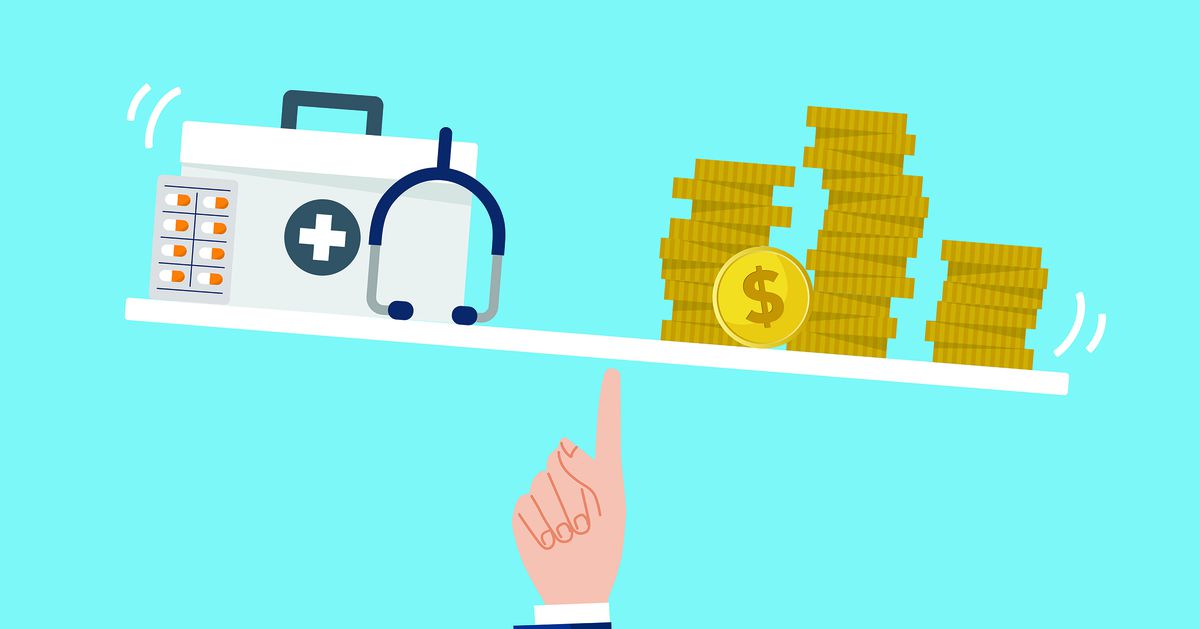[ad_1]
Inflation is on the rise, pushing up the price of gas and food. One sector of the US economy is behaving particularly strangely: for once, drug prices have risen at a much slower pace than the overall economy.
In October 2021, according to Altarum nonprofit healthcare analytics group, prices for health services rose 2% year-on-year, compared to 6.2% for all consumer products.
But a sharp rise in drug prices could still be imminent, experts say, delayed only because of the unique characteristics of the healthcare industry.
Over the past 30 years, consumer prices have almost never risen faster than medical inflation, which measures the evolution of prices paid for medical services, from doctor visits to surgeries to medical services. prescription drugs. On the contrary, the opposite has happened, especially during economic downturns; after the 2008 financial crisis, for example, headline inflation fell to almost nothing, but drug prices continued to grow at a rate of 2-3%.
In fact, since 2010, prices in the global economy and in healthcare have moved more or less in parallel – until spring 2020.
Altar
But while that may give the impression that the healthcare sector is enjoying a welcome respite from the headline inflation that is creating so much nervousness among businesses and political leaders, the reality seems less reassuring. This relatively slow growth in medical prices could be a mirage. And if healthcare inflation does eventually catch up with the wider economy, patients would largely be the ones paying for it.
Why medical inflation could accelerate soon
The same issues that drive up prices in the rest of the economy – rising costs in the supply chain, difficulty finding workers for open jobs – are also issues in the healthcare industry. The workforce crisis in particular is acute and is not expected to go away anytime soon, given the number of nurses and doctors who have left their jobs during the pandemic.
A recent Chartis Group survey found that 99 percent of rural hospitals said they were experiencing a staff shortage; 96 percent of them said they had the most difficulty finding nurses. This has forced hospitals to increase their wages and benefits or hire temporary aide from travel nursing companies that are more expensive – sometimes much more expensive – than regular full-time staff. The costs of purchasing personal protective equipment and other supplies have also been high due to Covid.
Hospitals will want to offset these higher costs by bringing in more money. While the number of patients they served fell sharply in March and April 2020, the number of patients has already returned to near pre-pandemic levels. There are only a number of ways to increase the number of services they provide, especially in times of staff crisis.
The other option is to try and charge health insurers more money for procedures and treatments, especially private insurers who negotiate prices directly with health care providers.
So while it may be some time before the higher prices reach patients, they likely will – just with a delay.
For medical services in particular, there is a time lag between when inflationary pressures such as rising procurement costs or labor shortages first appear and when they are actually felt. in health care prices.
In the rest of the economy, inflation and rising costs spill over into the market quite quickly. If the price of beef goes up today, the restaurant may increase the price of burgers tomorrow. If they can’t find fried cooks and need to increase wages to attract new workers, the restaurant can immediately charge more money for fries.
But the prices of health services are set in advance, written into binding contracts after negotiations between insurers and providers or after the government releases new regulations for public programs like Medicare. And those prices are usually set for an entire year, until another round of negotiations sets new prices for the following year.
Altarum inflation experts have told me that negotiations for the 2022 plans will determine how much the current inflationary crisis will ultimately affect medical prices.
These inflationary trends, such as rising labor costs, did not accelerate until 2021. Over the past decade, healthcare prices have steadily increased at a rate of about 1 to 2 %. Already in the past 18 months, prices for hospitals and doctors have exceeded an inflation rate of 3%. Altarum experts say they are monitoring whether healthcare prices will eventually rise at the same 5-7% rate currently seen in the rest of the economy, believed to be the fastest rate since 1993.
Such historic medical inflation would end up increasing costs for patients in two distinct ways. First, if providers negotiate higher payments from insurers to offset their rising costs, the insurer will turn around and increase premiums for its clients.
But patients also feel the increased costs more directly because they are being asked to pay more out of pocket for their health care. Deductibles and other cost sharing have steadily increased for the 180 million Americans enrolled in commercial health plans. At the same time, the number of Americans considered to be underinsured – meaning they have insurance but insurance wouldn’t necessarily provide them with adequate financial protection if they had a medical emergency – has increased.
So if drug prices end up rising at an historic rate, consumers are going to feel it both when they pay their premium and when they collect their prescription: they’ll end up getting stuck on both sides.
[ad_2]

